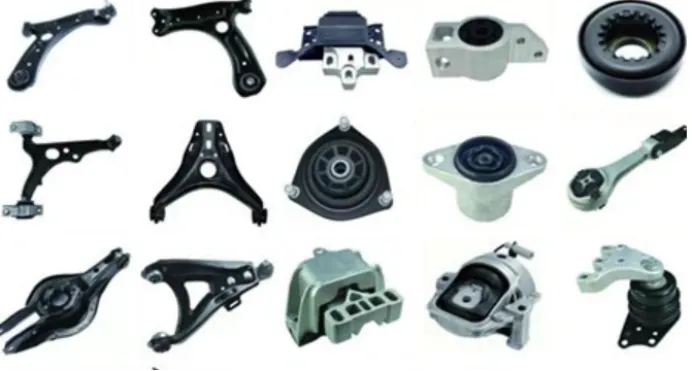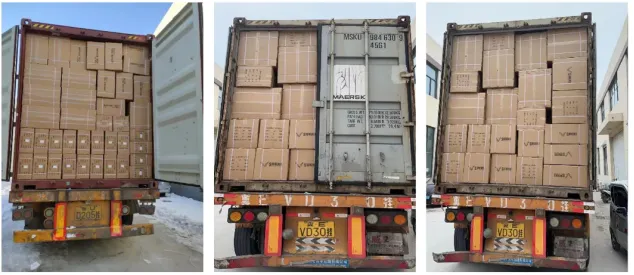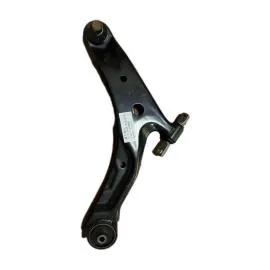The control arm, also known as an A-arm or wishbone, is a crucial component in modern automobiles that plays a vital role in the vehicle's suspension system. The main function of the control arm is to connect the wheel hub and steering knuckle to the chassis of the vehicle, allowing for smooth and controlled movement of the wheels.
The production process of a control arm involves several steps. First, the design of the control arm is created using computer-aided design (CAD) software, which allows for precise measurements and specifications. Next, the control arm is typically manufactured using high-strength steel or aluminum alloy, which are both durable and lightweight materials. The control arm is then forged, machined, and welded together to create a strong and reliable component.
Once the control arm is produced, it is installed in the vehicle's suspension system, where it plays a crucial role in maintaining control and stability. The control arm helps to absorb shocks and vibrations from the road, ensuring a smooth and comfortable ride for the driver and passengers. Additionally, the control arm helps to keep the wheels aligned and in proper contact with the road surface, improving handling and overall performance.
Overall, the use of modern control arms in automobiles has greatly improved the safety, comfort, and performance of vehicles on the road. By connecting the wheels to the chassis and supporting the suspension system, control arms play a key role in ensuring that vehicles can handle various road conditions with ease. Thanks to advancements in materials and manufacturing processes, control arms are now more durable and reliable than ever, making them an essential component in the modern automotive industry.
|
Akụrụngwa |
Ogwe njikwa nkwusioru ala maka Hyundai Santa Fe 54501-26000 |
|
Nọmba OEM |
54501-26000 |
|
Ihe onwunwe |
Ọla |
|
Agba |
Gosiri/ahaziri |
|
Ebe esi |
China Mainland |
|
Ọrụ |
OEM & ODM |
|
MOQ |
100 PCS |
|
Ikike inye |
100000/ọnwa |
|
Oge ịkwụ ụgwọ |
T/T, L/C |
|
Oge Mbuga ozi |
Ụbọchị 25-35 ka akwadoro iwu |
|
Usoro ahia |
FOB, CIF, CFR, EXW wdg |
|
Nkwakọ ngwaahịa |
1.Plastic akpa + Katọn; |


1.Matching na nha nke ụgbọ ala mbụ, Nrụnye mbụ.
2.Mmelite subversion ma kpochapụ mkpọtụ.
3.Safe,Fixed,Stable,Durable,Quality assurance.
4.Ịnya ụgbọ ala na ịnya kwụsie ike.
5.Reduce abnormal ije na ogologo elu okpomọkụ na-eguzogide ndụ.
6.Ụdị ụgbọ ala zuru ezu.
7.Excellent workmanship: A na-eji nlezianya hazie akụkụ ọ bụla iji hụ na ọrụ dị mma.
8.Exquisite n'elu ọgwụgwọ na zuru okè ịgbado ọkụ: Welding ihe bụ ọbụna na zuru, First-klas ígwè, ọkọlọtọ ọkpụrụkpụ. Na ihe zuru oke, oke, nrụrụ na mgbaji na-eguzogide ọgwụ.
9.The àgwà nke mbụ ụgbọ ala bụ ntụkwasị obi.


- Ajụjụ: Gịnị bụ usoro mbukota gị?
- A: Anyị nwere ọtụtụ ụdị ngwugwu, n'ezie a ga-anabata imewe gị, anyị nwere ike hazie gị ngwugwu
- Ajụjụ: Gịnị bụ usoro ịkwụ ụgwọ gị?
- A: T / T 30% dị ka nkwụnye ego, na 70% tupu nnyefe. Anyị ga-egosi gị foto nke ngwaahịa na ngwugwu tupu ịkwụ ụgwọ nguzozi.
- Ajụjụ: Kedu maka oge nnyefe gị?
- A: N'ozuzu, ọ bụ 5-10 ụbọchị ma ọ bụrụ na ngwongwo na-na ngwaahịa. ma ọ bụ na ọ bụ 15-20 ụbọchị ma ọ bụrụ na ngwaahịa adịghị na ngwaahịa, ọ bụ dị ka ọnụ ọgụgụ.
- Q: Ị nwere ike ịmepụta dị ka samples?
- A: Ee, anyị nwere ike na-emepụta site gị samples ma ọ bụ oru eserese. Anyị nwere ike wuo ebu na ihe ndozi.
- Q: Ị na-enye samples? ọ bụ n'efu ka ọ bụ mgbakwunye?
- A: Ee, anyị nwere ike ịnye sample maka n'efu mana anaghị akwụ ụgwọ nke ibu.
- Q: kedu ihe MOQ maka ihe ọ bụla?
- A: Ọ bụrụ na ihe anyị nwere ngwaahịa, ọ dịghị mmachi maka MOQ, na-ejikarị MOQ dị ka 100 iberibe anabata.
- Ajụjụ: Olee otú ị na-ekwe nkwa na àgwà?
- A: Tupu nnyefe, anyị ga-anwale ngwaahịa iji jide n'aka na ha nọ n'ọnọdụ dị mma. Anyị nwere akwụkwọ ikike nke ọnwa iri na abụọ. Ọ bụrụ na ị nweta nsogbu dị mma, anyị ga-ekwe nkwa nnọchi ma ọ bụ laghachi n'ime oge ikike.
- Q: Kedu ka ị si eme azụmahịa anyị ogologo oge na mmekọrịta dị mma?
- A:We keep good quality and competitive price to ensure our customers benefit ; We respect every customer as our friend and we sincerely do business and make friends with them, no matter where they come from
















































































































